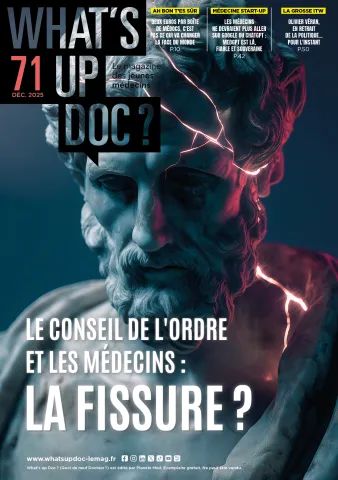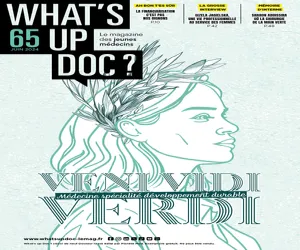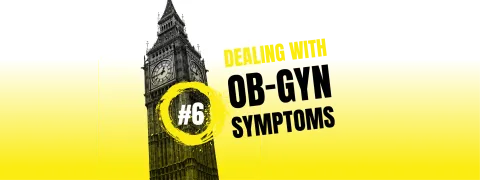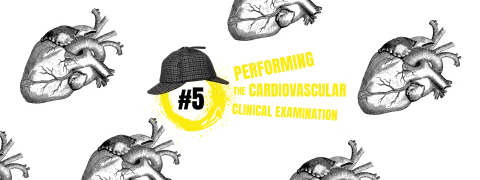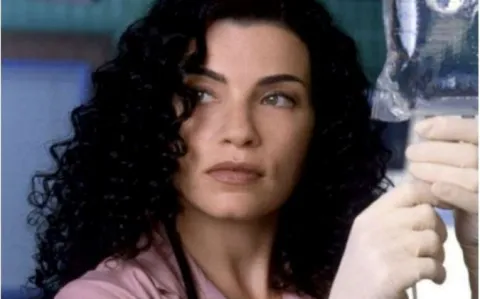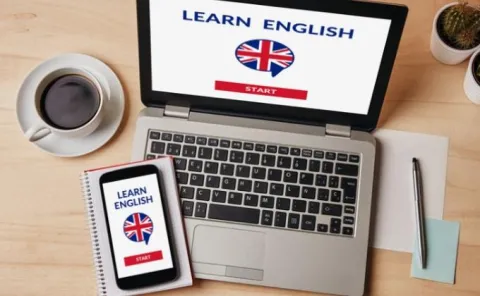
© IStock
Doctor: Ok Jim, can you take off your shirt and then sit on the bed, please?
Jim: Yes, doctor.
Doctor: Now first of all, I need to listen to your chest, just relax and breathe normally. Good! Now take a deep breath and hold… good! Again, deep breath please, hold…Good! Everything seems ok. Ok, now I need to feel your abdomen, can you lie on the bed, please?
Jim: Sure!
Doctor: Rest your head back on the pillow and rest your arms at your sides. I just need to listen to your abdomen, just relax. That’s fine. Now I need to feel your abdomen. I’ll be as gentle as possible, so just relax.
Jim: Ok!
Doctor: Any pain or tenderness here?
Jim: No.
Doctor: Or here?
Jim: A little.
Doctor: Ok, thank you. Now I need to perform a rectal exam. It’s a little uncomfortable, but it’s very important because of the pain you’ve been having. Is that OK?
Jim: Yes of course, you’re the doctor, do what you have to do!
Doctor: Ok. I need you to pull your trousers and your underpants towards your knees. Now, I need you to lie on your left side facing the wall, with your knees bent towards your stomach. I’ll cover you with this towel. Ok, well done. Now, I’m going to insert a gloved finger into your back passage. It will only take a moment, ok?
Jim: Ok.
Doctor: Everything ok? You’re doing very well. Ok, good, all done! You can get dressed now.
Jim: Thank you.
Doctor: Have a seat.
Jim: Is everything ok, doctor?
Doctor: Well Jim, the good news is that I don’t think that it’s anything too serious. I think the most likely diagnosis is that you’re suffering from what’s called a peptic ulcer, a small hole in the lining of your stomach. And that’s what’s probably causing the pain. It could be a result of all the Diclofenac tablets you’ve been taking.
3. How to give simple instructions.
To give instructions, use the infinitive without to (V).
In the negative, use the structure don’t + V.
Sequencing words are used to link the various instructions: first, first of all, now, then, after that, next, finally...
Ex. In order to examine a patient knee reflexes, you need to give the following instructions: First, take off your shoes and trousers. Now, sit on the examination table. Let your legs hang over the edge of the table. Relax. Don’t think about your legs.
4. How to give complex instructions.
To be less direct and more tactful, modal verbs are occasionally used:
Would you take off your shirt, please?
Could you lie down on the examination table?
Will you remove your glasses, please?
I’d like you to take a deep breath.
I want you to push as hard as you can.
5. Match the instructions with the reasons given on the right.
|
1. Open your mouth and say ah ! 2. Take off your clothes and lie down on the examination table. 3. Close your eyes and stand on one leg. 4. Bend over and touch your toes. 5. Follow my finger with your eyes. Don’t move your head. 6. Put your hand over your left eye and read the letters on the screen. 7. Give me your wrist. |
a. I’m going to check your balance. b. I’m going to check your visual acuity. c. I’m going to check your back. d. I’m going to check your abdomen. e. I’m going to check your throat. f. I’m going to check your ocular motor function. g. I’m going to check your pulse. |
6. Transform the following simple instructions into more tactful ones, using a different expression each time.
Ex. Close your eyes. 🡪 Will you close your eyes, please?
1. Bend over
2. Stand on one leg.
3. Close your left eye.
4. Lie on your stomach.
5. Take off your shoes and socks.
7. Translate the following sentences.
1. Quand je l’ai examiné, il avait une énorme ecchymose sur l’épaule droite.
2. Aura-t-il besoin de points de suture au menton ?
3. Serrez mes 2 doigts aussi fort que vous le pouvez.
4. Mettez de la pommade tous les jours sur votre plaie.
5. N’écartez pas les doigts. Je veux vous observer au repos.
6. Ne retirez pas votre main pendant que je vous pique.
Correction Ex. 5
1.e / 2.d / 3.a / 4.c / 5.f / 6.b / 7.g
Correction Ex. 6
1. Could you bend over, please? 2. Would you stand on one leg, please? 3. Will you close your left eye, please? 4. I’d like you to lie on you stomach. 5. I want you to take off your shoes and socks.
Correction Ex. 7
1. When I examined him, he had a huge bruise on his right shoulder. 2. Will he need stitches on his chin? 3. Squeeze my two fingers as hard as you can. 4. Apply some ointment on your wound every day. 5. Don’t spread your fingers, I want to observe you at rest. 6. Don’t remove your hand while I prick.
